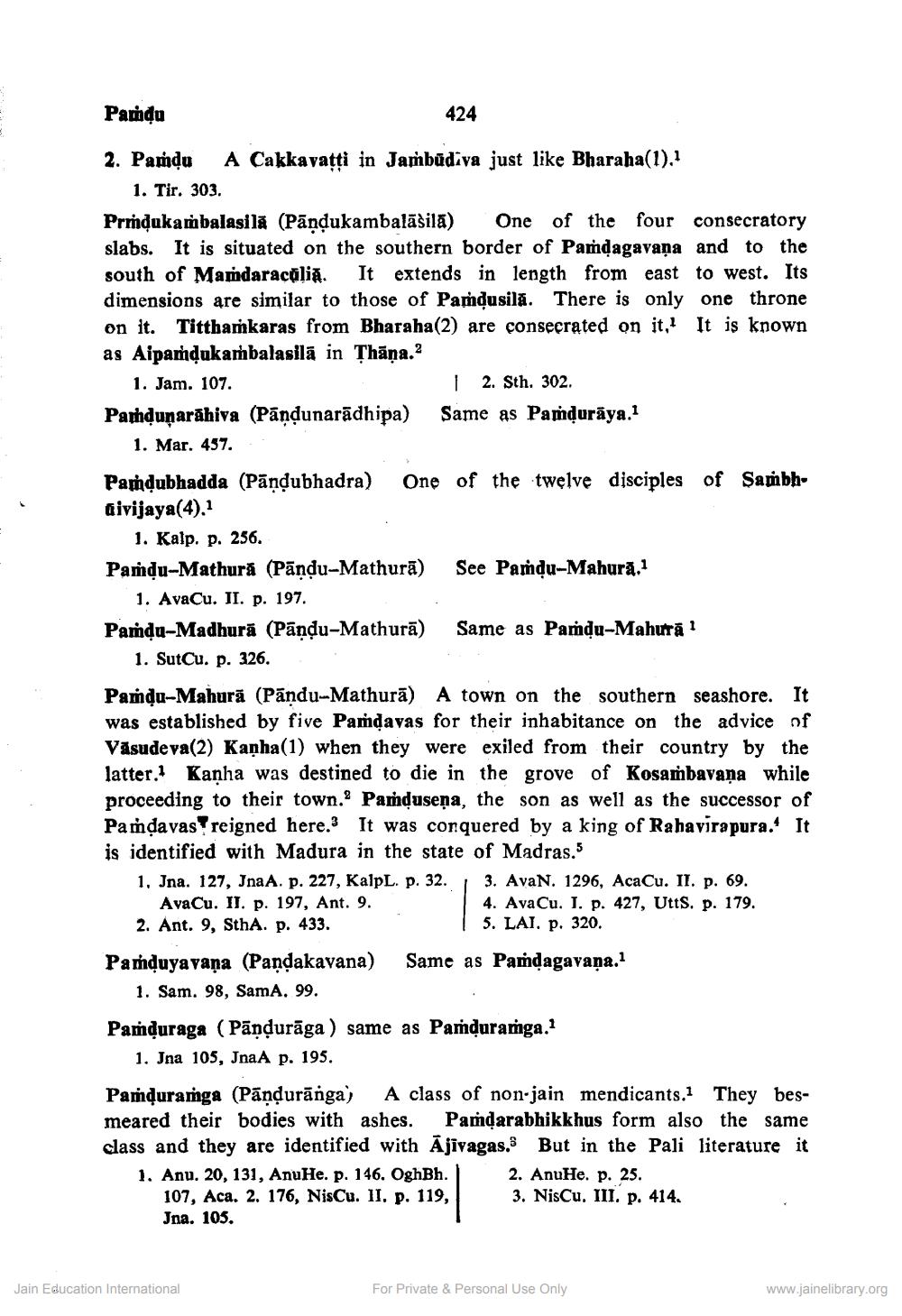________________
Pathậu
424 2. Pardu A Cakkavatti in Jambūdiva just like Bharaha(1).
1. Tir. 303. Prmţukambalasila (Pāndukambalāšila) One of the four consecratory slabs. It is situated on the southern border of Pamdagavaņa and to the south of Mamdaracālia. It extends in length from east to west. Its dimensions are similar to those of Pańqusila. There is only one throne on it. Tittharkaras from Bharaha(2) are consecrated on it. It is known as Aipamąukaṁbalasilā in Thāņa. 1. Jam. 107.
I 2. Sth. 302. Parndunarāhiva (Pāņdunarādhipa) Same as Pańļurāya.?
1. Mar. 457. Pandubhadda (Pāņdubhadra) One of the twelve disciples of Sambhdivijaya(4),1
1. Kalp. p. 256. Pamdu-Mathura (Pāndu-Mathurā) See Paṁdu-Mahura.1
1. Ava u. II. p. 197. Pamdu-Madhură (Pandu-Mathurā) Same as Pamdu-Mahurā !
1. SutCu. p. 326. Pandu-Mahurā (Pāndu-Mathurā) A town on the southern seashore. It was established by five Pamļavas for their inhabitance on the advice of Vasudeva(2) Kanha(1) when they were exiled from their country by the latter. Kaņha was destined to die in the grove of Kosambavaņa while proceeding to their town. Pamdusena, the son as well as the successor of Pandavas reigned here. It was conquered by a king of Rahavira pura. It is identified with Madura in the state of Madras. 1, Jna. 127, JnaA. p. 227, KalpL. p. 32. 3. AvaN. 1296, AcaCu. II. p. 69. AvaCu. II. p. 197, Ant. 9.
4. Ava Cu. J. p. 427, Utts. p. 179. 2. Ant. 9, SthA. p. 433.
| 5. LAI. p. 320. Parduyavana (Pandakavana) Same as Pamdagavaņa.1
1. Sam. 98, SamA. 99.
Pamduraga (Pāndurāga) same as Pamduramga.1
1. Jna 105, JnaA p. 195.
Panduramga (Pāndurānga) A class of non-jain mendicants. They besmeared their bodies with ashes. Pamdarabhikkhus form also the same class and they are identified with Ājivagas. But in the Pali literature it 1. Anu. 20, 131, AnuHe. p. 146. OghBh. 2. AnuHe. p. 25.
107, Aca. 2. 176, NisCu. II, p. 119, 3. NisCu. III. p. 414. Jna. 105.
Jain Education International
For Private & Personal Use Only
www.jainelibrary.org




